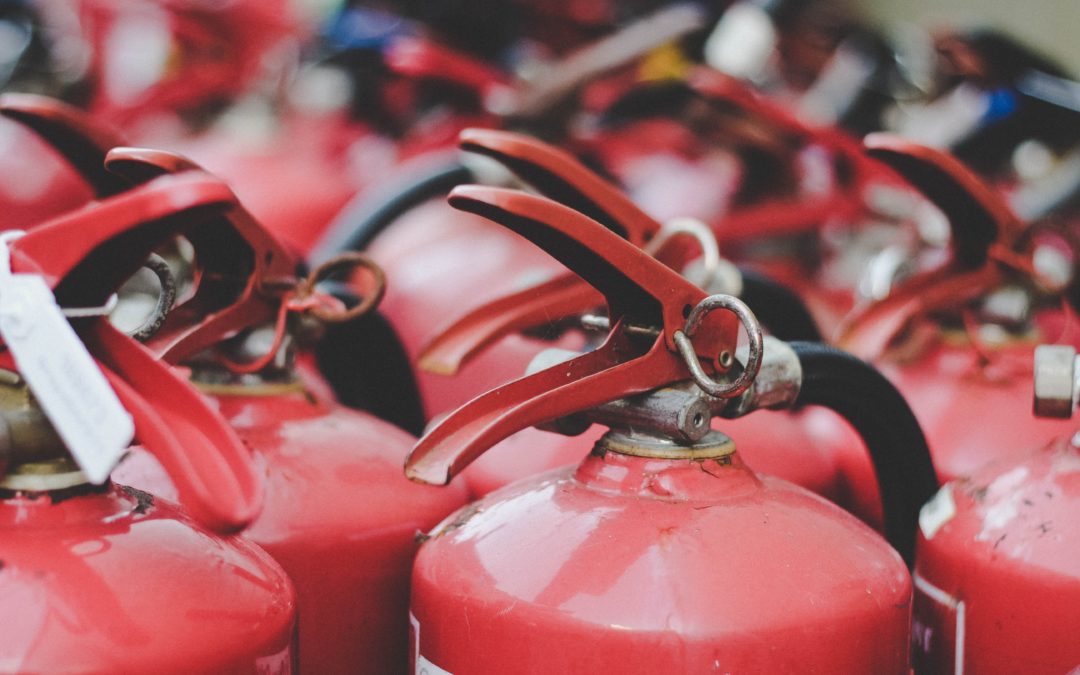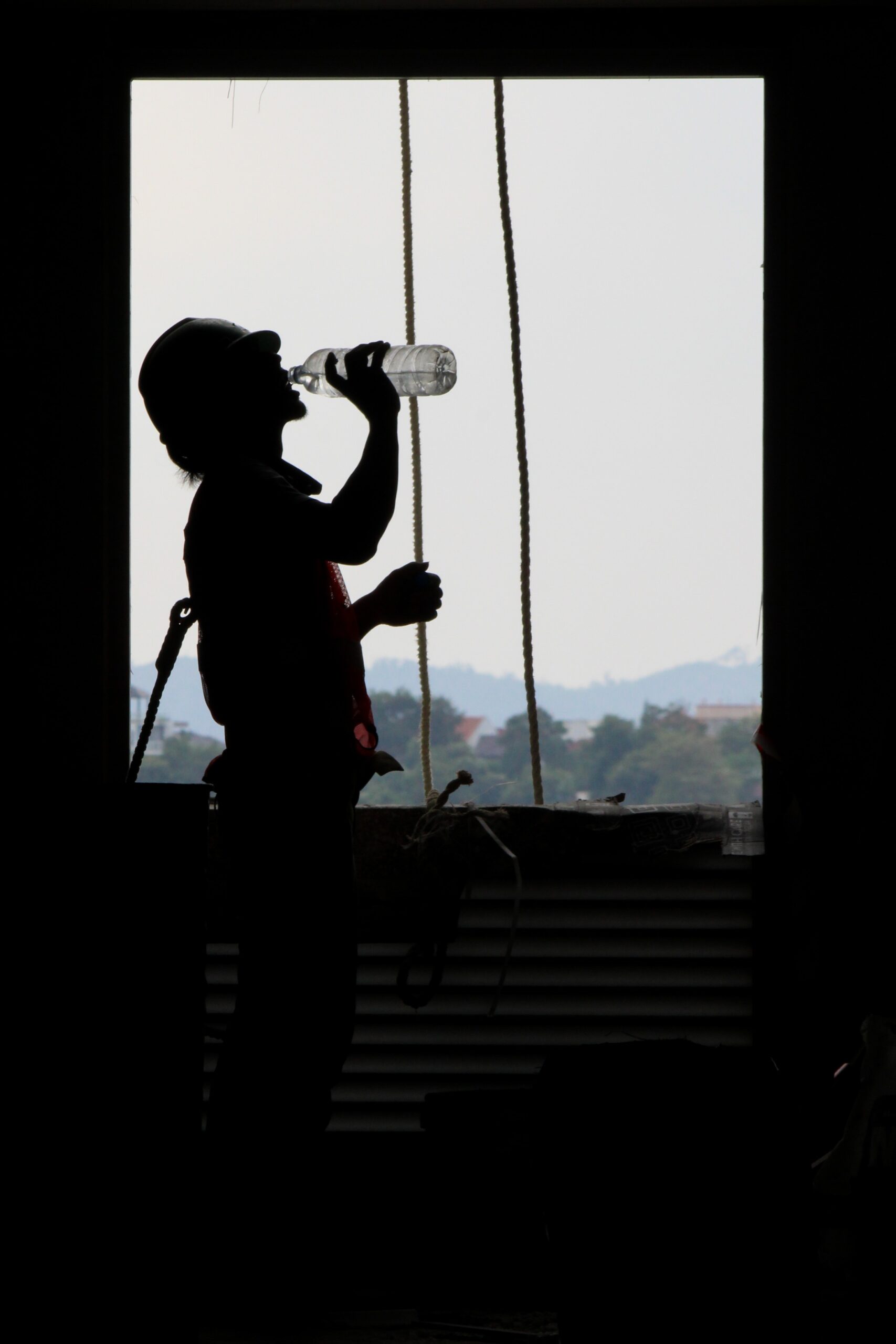
Feb 17, 2019 | Professional, Safety
Does
anyone else remember being in grade school and out of nowhere, the entire
building’s alarm system was activated? “Here we go again.” I would say. Yes, I
am talking about our monthly fire drills at school. No matter the weather, time
of the day, or special events going on, those pesky teachers always found a way
to make us stop what we were doing for a routine fire drill. Although these
very redundant and at times what felt pointless exercises were taught, I didn’t
realize how important fire safety was. It also didn’t help that my main source
of fire safety awareness came from Dwight Schrute while watching The Office. Come
on though, rookie mistake on Ryan’s part leaving his bread in the toaster for
that long.
Fast
forward about 10 years, I was working as a hand in the oil and gas fields and
was taking safety training when the topic of fires and emergency action plans
was brought up. After learning about the different fires that took place and
different ways to fight a fire, I was shocked of the different types of fires
that could be created and the different ways you should fight each fire. This is
useful information that should be taught at an earlier age in my opinion, its
never too early to start thinking smart and safe!
Below, we
will be discussing the 3 most popular fire extinguisher types on the market and
when to use each of them if a fire starts. Feel free to use this short post as
a crash course into the fire-fighting sector, but always feel confident to call
your local emergency fire response team if a fire starts.
The most common types of fire
extinguishers used on different types of fire fuels are:
- Water fire extinguisher
Water fire extinguishers douse fires by taking away the heat element of the
fire triangle. They’re used for Class A fires only. - Dry chemical fire extinguisher
Dry chemical extinguishers extinguish the fire by interrupting the chemical
reaction of the fire triangle. They’re most effective on Class A, B and C
fires. - CO2 fire extinguisher
Carbon dioxide extinguishers take away the oxygen element of the fire triangle.
They also remove the heat with a cold discharge. They can be used on Class B
and C fires.
With this in mind, fire extinguishers have been developed and classified in order to combat such fires. Below is a chart of the 3 most popular fire extinguishers to deal with fires:
Type of
Extinguisher |
What the fire extinguishers are used for:
|
| Class A fire extinguisher | These extinguishers are used for fires involving ordinary combustibles, such as wood, paper, cloth, trash and plastics. |
|
Class B fire extinguisher
| These extinguishers are used for fires involving flammable liquids, such as grease, gasoline and oil. |
|
Class C fire extinguisher
|
These extinguishers are used for fires involving electrical
equipment, such as motors, transformers and appliances.
|
|
We now
have a basic understanding of what extinguishers fight what fires. But what
about when you are face to face with the fire? That is the very scary and at
times overwhelming point where your knowledge and skills will be put to the test.
This post also stresses that fire extinguishers should not be used to fight
larger fires, please leave that to the professionals. These tools can be used
for fires that have just started and are containable.
The acronym
PASS is an easy way to remember how
to use a fire extinguisher:
P- Pull
the pin
A- Aim at
the base of the fire
S- Squeeze
the lever steadily and evenly. Squeezing too hard can waste the fire-fighting
agent
S- Sweep the
nozzle side to side, continuing to aim at the base of the fire
What do we do from here?
Well, now
that we have a basic understanding on how fires are started, the types of fires
that take place and which fire extinguishers should be used, I recommend seeking
further education and going through a fire safety course from a trained
professional or your local fire-fighting department. At the very least, take a
look at the extinguisher you have in your homes, work place, or local community
centers. Are these the right extinguishers for a fire that might occur? Please
make sure you if a fire breaks loose, calling professionally trained first
responders is always the preferred route.
Was this helpful?
If you found this article interesting, exciting or useful, please check out more safety related articles at https://b42l.com

Oct 19, 2018 | Health, Professional, Safety
If you are superman, PLEASE STOP READING
If you are NOT SUPERMAN PLEASE PROCEED
Because you are not superman you most likely fall into one of these three categories:
- Employee
- Employer (manager/decision maker)
- Community Member
Although all of these groups are unique, there is one evident similarity between them. That similarity is, each groups member’s are at risk to either suffer an emergency situation or be a bystander in an emergency. Having a proper Emergency Plan in place is a proactive step to ensure your staff/group is aware of these situations, but what happens when they need to act?
If the situation becomes life or death, can you confidently proclaim: “My employees have the best fighting chance”
If you are unsure please continue reading.
Reasons to Train Your Staff for an Emergency Situation
- The Workforce is Unprepared as a Whole:
- According to the American Heart Association 55% of employees in corporate offices, hospitality, education and industry/labor cant get CPR/AED/First Aid training from their employer. What was more shocking is that nearly 50% of employees couldn’t even locate an AED in their workplace.
- US Occupational Safety and Health Administration (OSHA) reports that there are somewhere close to 10,000 cardiac arrest cases occurring in the workplace every year.
- Prevalence of Diverse Emergency Situations: THE STATS SPEAK FOR THEMSELVES
-
- The CDC reported the number 7 cause of death being diabetic emergencies. There were a total of 79,535 lives lost between 2011-2014. With nearly 26,000 deaths every year, diabetic emergencies are a tremendous threat and should be taken seriously.
- There were 1.7 million emergency department visits with asthma as the primary diagnosis in 2016. Many people believe asthma is a condition that only athletes suffer. It is evident that many individuals visit the emergency room due to asthma related emergencies. The best plan of action you can take is having your staff aware of these statistics and preparing them to respond.
- The CDC also reports that there were 16 million cases of Hay Fever in the past 12 months (2016 data). Hay Fever, is an allergy caused by pollen or dust in which mucous membranes are inflamed in the eyes and nose. Whether you are in the landscaping business and are exposed to grass, or an office that has routine dust collection, your EMPLOYEES ARE AT RISK!
These are just a few of the emergency situations a workforce could be exposed to. Being prepared in the event of an emergency is the best way to ensure you protect your employees and reduce the risk of fatalities caused by emergencies.
- COMPLIANCE COMPLIANCE COMPLIANCE
One pressing reason to get your staff trained is to ultimately protect yourself against fines and auditing scares.
OSHA standard 1910.151 clearly states:
“In the absence of an infirmary, clinic, or hospital in near proximity to the workplace which is used for the treatment of all injured employees, a person or persons shall be adequately trained to render first aid”.
Many first aid programs cover the following topics:
- Shock
- Diabetic Emergencies/Allergic Reactions
- Breathing emergencies including choking
- Slips/trips/falls (suspected or obvious trauma causing broken bones)
- Bleeding emergencies
- Heat/cold related emergencies
- Suspected poisoning/overdose including proper Naloxone protocol.
Now that we have covered a few reasons why the employer should invest in preparing for emergency situations, let’s take a look at why employees and community members should BUY IN TO EMERGENCY TRAINING:
Reasons Employees or Community Members should become trained
- You could experience an emergency yourself – if you are trained in emergency preparedness, we applaud you in your efforts to provide care. All too often though, there have been instances where the person who was the designated trained, experiences an emergency themselves.
- You can use your skills outside of the office – While we have been highlighting workplace preparedness, you may end up in a situation out of the office that requires your skills to be used.
- Rules have changed – Yes, you may have taken a CPR class 20 years ago when you were in PE. That being said, certifications are only valid for 2 years upon completion. The reason behind a 2 year certification is because standards change and science teaches us more up to date information to apply to use. One of the biggest changes is the use of Compression Only CPR. In this form of care, a responder chooses not to administer rescue breaths.
Take a look where the fitness staff used their skills out of the classroom to help save the life of a Gonzaga basketball player on the court.
https://www.youtube.com/watch?v=vbZJst2CHhI
Where should I get my staff trained?
There are plenty of resources available to you. The most important thing to keep in mind is where the information is coming from. Having trainers that are certified instructors makes the difference and brings credibility to your event. Here are a few resources:
Before It’s Too Late LLC – B42L.com
- B42L is based out of Pittsburgh, PA and has certified nearly 1,000 participants
- B42L travels to your location and provides onsite training
- B42L has all instructors certified through The American Red Cross
- B42L has trained companies in the following industries: Oil and Gas, Home care and nursing, physical therapy, trucking, construction, manufacturing, and many more
You can also use resources such as The American Red Cross or American Heart Association.
Final Thoughts: It is important to take ownership of safety protocol and emergency preparedness. Employers should abide by OSHA regulation to stay in compliance. You could fall victim to an emergency situation yourself. B42L is proud to serve your training needs!
Visit B42L.com to save your seat and check out other safety resources.
Was this helpful? Leave a comment and connect with us on social media or you can visit our website at B42L.com






